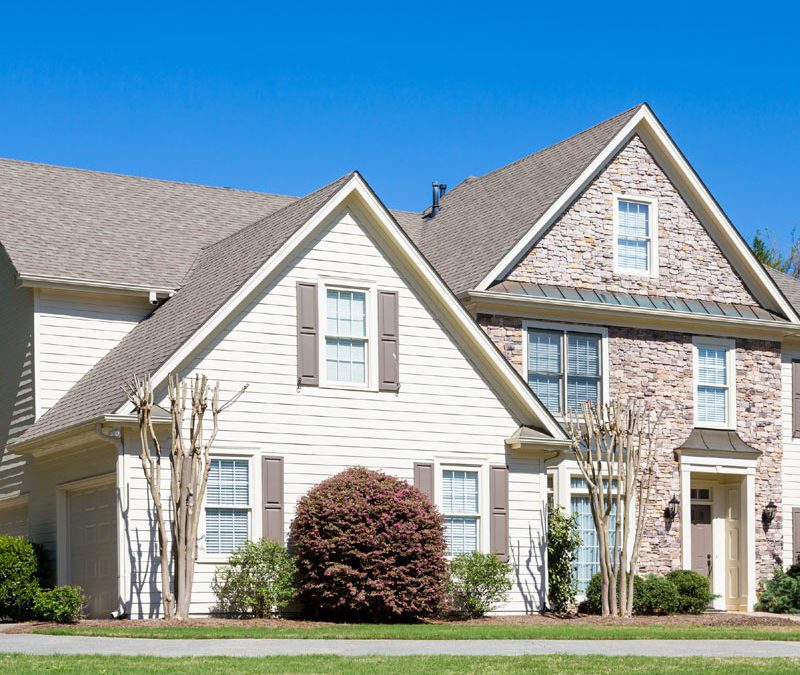If vinyl siding is not the answer for you, Oaks Construction also offers Fiber-Cement and Stone and Stone-Veneer to fit your style and budget.
Depending on the location of your home, as well as other factors, there are both pros and cons when it comes to cladding your home with certain type of siding. Below are 5 exterior materials you can wrap your house around.
1. Fiber-Cement Siding
Often compared to vinyl siding, fiber-cement siding is a great option for homeowners who want the look of wood siding, without the cost.
Pros
– Cheaper than wood
– More durable than wood
– Requires less maintenance than wood
– Fireproof, water resistant and safe from insect damage
– Comes in various colors and designs and can be made to look like brick, stone or, more commonly, wood
Cons
– Heavy material
– While not as heavy as brick or stone, its weight does tend to skyrocket installation costs
– More expensive option to vinyl
2. Stone and Stone-Veneer
Both natural and fabricated stone exterior siding creates an upscale, decorative appearance to a home. Unlike brick, it’s a more natural option for a house and can create a unique exterior pattern.
Pros
– Durable material
– Resistant to rain and other elements
– Requires little maintenance
– Longevity
– Adds aesthetics to the look and feel of your home
Cons
– Material and labor cost are high
3. Wood Siding
Like vinyl siding, wood siding is versatile and durable. The surface of the wood can be painted or stained in any desired color, requiring maintenance every two – five years depending on the type of finish.
Pros
– Easy to install, keeping costs down and the time frame reasonable
– Timeless and classy material that’s still sought after
– Sturdy aesthetic
Cons
– Expensive and can vary in price, depending on the type of wood
Type of wood: cedar, spruce, fir and redwood
Type of wood siding: clapboard, shingles, board and batten, logs
4. Aluminum Siding
Aluminum siding comes in a wide variety of colors and can convincingly create the look of more expensive wood siding. Aluminum siding requires very little maintenance and with proper care can last up to 40 years.
Pros
– Lightweight and does not rust
– Does not burn or melt in a house fire
– Good waterproofing ability when properly installed
– Recyclable
Cons
– Dents easily and difficult to repair or replace when damaged
– Scratches in the paint finish are very obvious
– Will need repainting after about 10 years and removing the oxidation before repainting is labor-intensive
– Considerably less desirable by home buyers
– May decrease the value of your home
5. Brick
Brick exterior siding is the most traditional option for homeowners. It’s a timeless look found in most suburbs, especially new construction, making it the go-to choice when buying or updating a home.
Pros
– Durable, low-maintenance material
– Comes in variety of color choices
– Doesn’t require repainting or refinishing
– Aesthetically pleasing with a timeless look
Cons
– More expensive, compared to other siding choices
– Expensive installation due to the weight
You can cut down on costs by using a brick alternative called brick veneer, which uses thin layers of brick.
When considering the best exterior material option for your home, make sure you do your research. Consider the cost behind it, the durability, energy efficiency, and aesthetics. They will help you determine what you’re able to afford and what you’ll be able to manage on a maintenance level.

